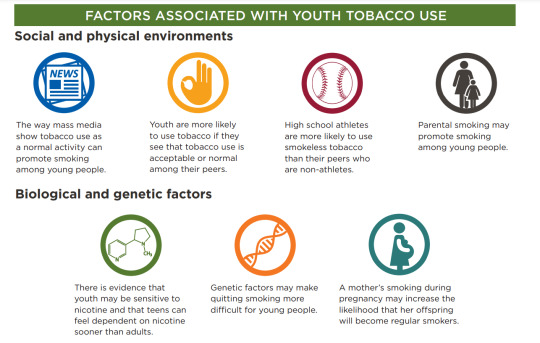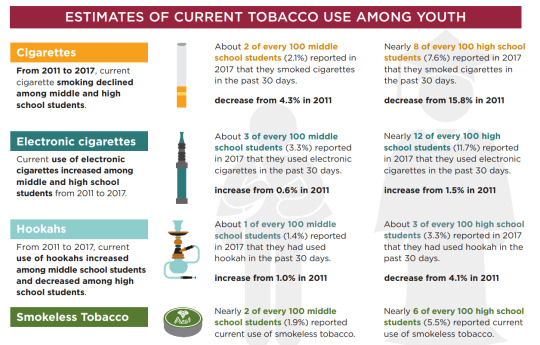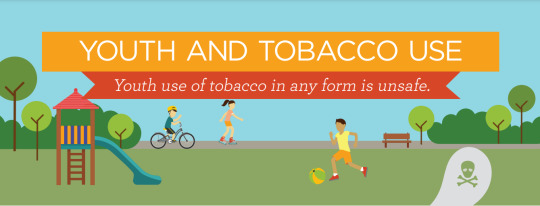Text
Tobacco-Free Finance Pledge 5-Year Anniversary Event.
Theme: 'There's no room for tobacco in a Net Zero world'.
Tobacco Free Portfolios is holding a High-Level side event on the sidelines of the 78th session of the United Nations General Assembly, to celebrate 5 years of the Tobacco-Free Finance Pledge. This event aims to accelerate and amplify our global impact, drive progress towards a tobacco-free world and help safeguard the wellbeing of both people and the planet.
Purpose:
Celebrate 5 years of the Tobacco-Free Finance Pledge.
Welcome new Pledge Signatories.
Encourage 'tobacco-free' to be embedded into Net Zero strategies, due to tobacco's alarming planetary footprint.
Launch the 2023 Investor Statement on Tobacco.
0 notes
Text
Pledge to end subsidies on tobacco growing.

You must replace tobacco because it has a huge carbon footprint. It uses a lot of water, it has real environmental problems,” Sonja insists. “If we look at the carbon footprint of the cigarette industry, we see 78% of carbon emissions occur in tobacco growing and curing, not in factories or distribution, but through pesticide use and cutting down and burning forests for fuel.”
However, replacing one monoculture with another, such as growing soybeans for feed in poultry farming, does not solve the most important question for tobacco alternatives: is it sustainable – for the environment, for the economy, for the society or community where it is grown? Is it resilient to the effects of climate change?
“Farmers in rich countries can use their land for solar panels,” Sonja points out, but she says the level of investment needed is too high for a smallholder with only a hectare of arable land. “This is why governments need to support farmers financially to diversify,” she insists, noting also that tobacco farming is labour-intensive, and people cannot innovate if they are tired and sick.
Sonja is adamant that countries which are champions of tobacco control need to support the fight in other countries. As an organization, Unfairtobacco collate articles to showcase different alternative projects underway around the globe. Their map is intended as a collection of ideas and options, rather than as a research database, she says. “I would like to see governments investing in ideas, saying ‘Okay, let’s see if this works’ and, if so, making an idea accessible to other countries where tobacco farmers need it most for their livelihood.”
“We try to get the message across here in Germany that the things we use in our lives have a footprint elsewhere in the world, and that we need to change our way of living to support a change in other countries.”
#world no-tobacco day#31 may#WHO/PAHO#campaign#world health organization (who)#child labour in tobacco#tobacco farmers#alternative crops#we need food - not tobacco#WHO Framework Convention on Tobacco Control (WHO FCTC)
0 notes
Text
Expose industry efforts to obstruct sustainable livelihoods work.

Tobacco farmers are not the enemy, but the weakest actor in the tobacco trade system, and they need support from governments and rich countries to step away from growing tobacco, Sonja continues. “The problem is that countries need to export things and tobacco generates a lot of revenue. Farmers would need to change to something which can be exported. And that is a difficult thing.”
There have been steps towards this and projects which are working well, Sonja points out, but there are many obstacles. One of them is the need for poor countries to receive export revenues to pay off national debt, and another is the interference of the tobacco industry. Then, there is the issue of sustainability.
“Tobacco can’t be eaten in an emergency. It’s not sustainable for the community where it is grown,” Sonja emphasizes. “If you grow organic foods, which are sold locally, then this could be sustainable, if people can buy the food, or if it can be sold to a school feeding programme for example, but it will not be economically sustainable for a whole country.”
In response to these challenges, and together with international partners, Unfairtobacco initiated the Cape Town Declaration on Human Rights and a Tobacco-free World, to which more than 150 organizations have signed up. Unfairtobacco also lend support to the WHO Framework Convention on Tobacco Control (WHO FCTC), in which governments are asked to support alternatives to tobacco farming.
#world no-tobacco day#31 may#WHO/PAHO#campaign#world health organization (who)#child labour in tobacco#tobacco farmers#alternative crops#we need food - not tobacco#WHO Framework Convention on Tobacco Control (WHO FCTC)
0 notes
Text
Support efforts to combat desertification and environmental degradation by decreasing tobacco farming.

“Tobacco has implications for humans everywhere and for the environment, from the use of pesticides and child labour in tobacco growing, to the injustice of passive smoking,” explains Sonja. “We support the advocacy work of WHO on funding alternative livelihoods because that is a big problem that governments do not commit to.”
#world no-tobacco day#31 may#WHO/PAHO#campaign#world health organization (who)#child labour in tobacco
0 notes
Text
Raise awareness in tobacco farming communities about the benefits of moving away from tobacco and growing sustainable crops

More than 90% of the world’s tobacco is grown in low- and middle-income countries, mostly by smallholder farmers who need to use unpaid family labour to make ends meet, leading to child labour. Tobacco growing also contributes to social injustices including food insecurity, environmental damage and climate change.
#world no-tobacco day#31 may#world health organization (who)#WHO/PAHO#campaign#child labour in tobacco
0 notes
Text
End tobacco growing subsidies and use the savings to support farmers.

This campaign encourages governments to end tobacco growing subsidies and use the savings to support farmers to switch to more sustainable crops that improve food security and nutrition.
0 notes
Text
An estimated 1.3 million children work in the tobacco industry, often in hazardous environments.

Tobacco growing countries often face a negative economic impact due to the adverse health, environmental and social impacts of growing tobacco.
0 notes
Text
Case studies on alternative lovelihoods to tobacco.
The problem: Tobacco growing is associated with child labour, health risks for farmers and deforestation, and it jeopardizes food security. The solution: alternative livelihoods like kenaf, parsley or soybean.
The preconditions for exiting tobacco cultivation are very different from country to country. Our case studies take a closer look at alternative livelihoods to tobacco growing in Malaysia, Malawi and Germany. Are they economically viable? Are they ecologically justifiable? Do they contribute to more social justice? In Malaysia and Germany, tobacco growing was not a main source of income for the ecomony as a whole. But for Malawi, tobacco is a major export crop. Smallholder farmers who are cultivating most of the world’s tobacco crop are struggling with the huge detriments of tobacco growing, but also with the insecurities linked to switching to other crops. Which different paths can lead to a tobacco-free agriculture?
We asked authors from the concerned countries to take a closer look and analyse the economic, ecological, and social aspects of transitioning from tobacco to alternative livelihoods.
0 notes
Text
20th anniversary of the adoption of the WHO Framework Convention on Tobacco Control.
Seventy-sixth World Health Assembly Strategic Roundtable.
As part of WHO's 75th anniversary, we celebrate the 20th anniversary of one of the key milestones in the history of WHO: the adoption of the first international public health treaty. The WHO Framework Convention on Tobacco Control (WHO FCTC), an evidence-based instrument, provides new legal dimensions for international cooperation. This roundtable will call for Member States to accelerate implementation of the WHO FCTC measures.
The strategic roundtable will also provide lessons to inform ongoing negotiations for a WHO convention, agreement or other international instruments on pandemic prevention, preparedness, and response following the COVID-19 pandemic.
To mark the 20th anniversary of the adoption of the WHO FCTC by the 56th World Health Assembly in 2003 Parties to the Treaty and other key players will join to celebrate the successes in tobacco control enabled by the WHO FCTC.
This roundtable will be concluded by an award ceremony for the 2023 World No Tobacco Day Director-General's Special Recognition Award.
The session takes place in UN Palais de Nations, Room XVIII on Saturday 27 May 2023 between 13:00–14:15 CEST.
Follow the session via webcast
Moderator
Dr Ruediger Krech, Director, Health Promotion, WHO
Panelists
Dr Tedros Adhanom Ghebreyesus, WHO Director-General
Dr Ali Mrabet, Minister of Health, Tunisia, Awardee
Dr Line Vold, Director-General, Department of Public Health, Ministry of Health and Care Services, Norway
Dr Reina Roa, Ministry of Health, Panama, Awardee
Mr Kwaku Agyemang-Manu, Minister of Health, Ghana
Dr Adriana Blanco Marquizo, Head of Secretariat, WHO FCTC
Ms Paula Johns, Executive Director, ACT Health Promotion
Dr Jarbas Barbosa da Silva Jr., WHO Regional Director for the Americas
#20th anniversary#WHO FCTC#world health organization (who)#tobacco control#roundtable#Member States#World Health Assembly (WHA)#call to action
0 notes
Text
Reducing Youth Tobacco use.

National, state, and local program activities have been shown to reduce and prevent youth tobacco use when implemented together. They include the following:
Higher costs for tobacco products (for example, through
increased taxes)
Prohibiting smoking in indoor areas of worksites and public places
Raising the minimum age of sale for tobacco products to 21 years, which has recently emerged as a potential strategy for reducing youth tobacco use
TV and radio commercials, posters, and other media messages targeted toward youth to counter tobacco product advertisements
Community programs and school and college policies and interventions that encourage tobacco-free environments and lifestyles
Community programs that reduce tobacco advertising,
promotions, and availability of tobacco products
Some social and environmental factors have been found to be related to lower smoking levels among youth. Among these are:
Continued efforts are needed to prevent and reduce the use of all forms of tobacco use among youth.
Racial/ethnic pride and strong racial identity
Higher academic achievement and aspirations
#tobacco-free environments#world no-tobacco day#youth under 18 years#youth and tobacco use#tobacco products#campaign#state tobacco use prevention#CDC Tobacco Free#high school students#middle school students#smoke#tobacco use
0 notes
Text
Other influences that affect youth tobacco use.

Personal perceptions: Expectations of positive outcomes from smoking, such as coping with stress and controlling weight, are related to youth tobacco use.
Other influences that affect youth tobacco use include:
Lower socioeconomic status, including lower income or education
Lack of skills to resist influences to tobacco use
Lack of support or involvement from parents
Accessibility, availability, and price of tobacco products
Low levels of academic achievement
Low self–image or self–esteem
Exposure to tobacco advertising
#nicotine dependence#tobacco consumers#youth under 18 years#youth and tobacco use#youth#state tobacco use prevention#tobacco use#CDC Tobacco Free#Depression#Anxiety#daily stress#smokeless tobacco
0 notes
Text
Factors associated with youth tobacco use.

Social and physical environment
The way mass media show tobacco use as a normal activity can
promote smoking among young people.
There is evidence that youth may be sensitive to nicotine and that teens can feel dependent on nicotine sooner than adults.
Youth are more likely to use tobacco if they see that tobacco use is acceptable or normal among their peers.
Biological and genetic factors
Genetic factors may make quitting smoking more difficult for young people.
High school athletes are more likely to use smokeless tobacco
than their peers who are non-athletes.
A mother’s smoking during pregnancy may increase the likelihood that her offspring will become regular smokers.
Parental smoking may promote smoking among young people.
#smokeless tobacco#Genetic factors#Parental smoking#youth under 18 years#youth and tobacco use#tobacco consumption#CDC Tobacco Free#tobacco use#state tobacco use prevention
0 notes
Text
Use of multiple tobacco products is prevalent among youth.

In 2017, about 2 of every 100 middle school students and about 9 of every 100 high school students reported current use of two or more
tobacco products in the past 30 days.
In 2013, about 9 of every 100 middle school students and about 31 of every 100 high school students said they had ever tried
two or more tobacco products.
Youth who use multiple tobacco products are at higher risk for developing nicotine dependence and might be more likely to continue using tobacco into adulthood.
#nicotine dependence#youth under 18 years#youth and tobacco use#tobacco products#middle school students#high school students#CDC Tobacco Free
0 notes
Text
Estimates of current tobacco use among youth.

CIGARETTES: From 2011 to 2017, current cigarette smoking declined among middle and high school students.
ELECTRONIC CIGARETTES: Current use of electronic cigarettes increased among middle and high school students from 2011 to 2017.
HOOKAHS: From 2011 to 2017, current use of hookahs increased among middle school students and decreased among high
school students.
SMOLELESS TOBACCO.
#smokeless tobacco#hookahs#electronic cigarette#cigarettes#CDC Tobacco Free#youth under 18 years#youth and tobacco use#tobacco use#state tobacco use prevention
0 notes
Text
Flavorings in tobacco products can make them more appealing to youth.

Preventing tobacco use among youth is critical to ending the tobacco epidemic in the United States. Tobacco use is started and established primarily during adolescence.
Who used tobacco products in the past 30 days reported using a flavored tobacco product during that time.
73% of high school students
56% of middle school students
#tobacco products#Flavorings#flavored tobacco product#tobacco consumers#tobacco consumption#CDC Tobacco Free#youth#youth under 18 years#youth and tobacco use
0 notes
Text
Preventing tobacco use among youth is critical.

Nearly 9 out of 10 cigarette smokers first tried smoking by age
18, and 98% first tried smoking by age 26.
Each day in the United States, about 2,000 youth under 18
years of age smoke their first cigarette and more than 300
youth under 18 years of age become daily cigarette smokers.
0 notes
Text
Youth use of tobacco in any form is unsafe.

Continued efforts are needed to prevent and reduce the use of all forms of tobacco use among youth.
If smoking continues at the current rate among youth in this country, 5.6 million of today’s Americans younger than 18 will die early from a smoking–related illness. That’s about 1 of every 13 Americans aged 17 years or younger alive today. Explore further on Youth and Tobacco use.
#CDC Tobacco free#smoking–related illness#cigarette#youth#tobacco use#tobacco consumers#world no-tobacco day
0 notes